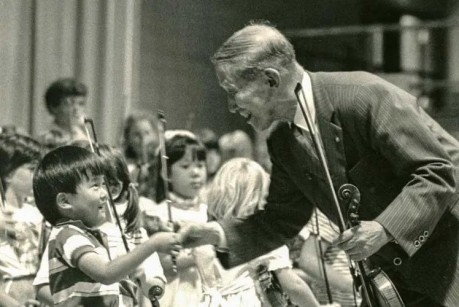
by Amelia Saracco
My experience in teaching Mandolin to young children dates back to 1989 when I was introduced to the Suzuki Method by Elena Enrico a Tutor in Instrumental Rhythm at the Istituto Suzuki Italiano (ISI).
Supported by Antonio Mosca, Suzuki Teacher Trainer for Cello in Turin, I began my study of the philosophy, the technique and the repertoire of the other instruments taught by the SUZUKI™ Method, and later applied my newly acquired knowledge to the teaching of Mandolin.
At the beginning of the new school year (1989-90) I started experimenting with the teaching of the Mandolin technique and the repertoire from Suzuki Book 1, which was originally meant for the Violin and ‘revisited’ for the Mandolin. We can note that, at the end of the 18th century, a Mandolin Teacher, Maestro Pietro Leone, dedicated to the Duke of Chartres la ‘Méthode raisonnée pour passer du Violon à la Mandoline et de l'archet à la plume.’
At the time, my only pupil was a Viola student, "borrowed" from Lee Mosca.
In the school year 1990-91 with the support of my colleagues, I set up the first Suzuki experimental course in Mandolin across Piedmont. It turned out to be a demanding but nevertheless extremely rewarding experience.
Since the students belong to different age groups, ranging from 4 to 14 years old, I looked for smaller Mandolins, and I rediscovered the "quartino", which used to be played in the Mandolin orchestras, but was subsequently forgotten.
I had some of these instruments reproduced by Lute Makers in different sizes and different models.
The experience gained in the past few years has shown me how the relatively "easy" structure of the mandolin, along with the comfortable posture, enabled even some physically challenged children to approach its study when they would have hardly been able to play any other instrument.
The following features make the Mandolin a very useful didactic tool, particularly for children –
• the tuning is in ascending fifths, like in the violin, with the same left-hand position,
but the frets make it easier to play
• the right hand, which holds the plectrum, rests comfortably on the instrument's body,
while only the wrist is moving
• the sitting position of the player, and the Mandolin's limited dimensions, allow for easier
handling
• every Mandolin is built to fit one particular child - it may be made in normal or reduced
dimensions, and its cost makes it affordable for families and schools
Parents learnt with their children helping them in their initial difficulty and speeding up their learning. They found the study of the Mandolin a pleasure in itself. Some of them eventually gave up unable to cope with their own child's mastery, some played on, making an old, unrealised dream come true.
The whole experience, with its ups and downs, gave me many rewards, which encouraged me to pass on my own idea to other Mandolin players, who believe in teaching children as well as adults, to grow up together and 'to communicate universally the deepest emotions'.
Today, the Mandolin is taught in the Suzuki Schools of Turin, Asti and Savigliano, where some thirty children from levels 1-5 study a mixed repertoire, with some pieces composed for mandolin and transcribed from the repertoire of other instruments
For information about Suzuki Mandolin and ESA Teacher Training courses for Mandolin
please contact Amelia Saracco or the Italian Suzuki Association
Please note - this search only finds Suzuki teachers that are interested in taking on new students. Not all ESA members are listed - some teachers have opted out.
There are currently no teachers that match this criteria
There are currently no Trainers that match this criteria
There are currently no Instructors that match this criteria
There are currently no exam results to show

By ESA
12th September 2024

By ESA
15th July 2024

By ESA
05th July 2024

By ESA
09th February 2024

By ESA
08th February 2024

By ESA
27th October 2023

By ESA
25th April 2023